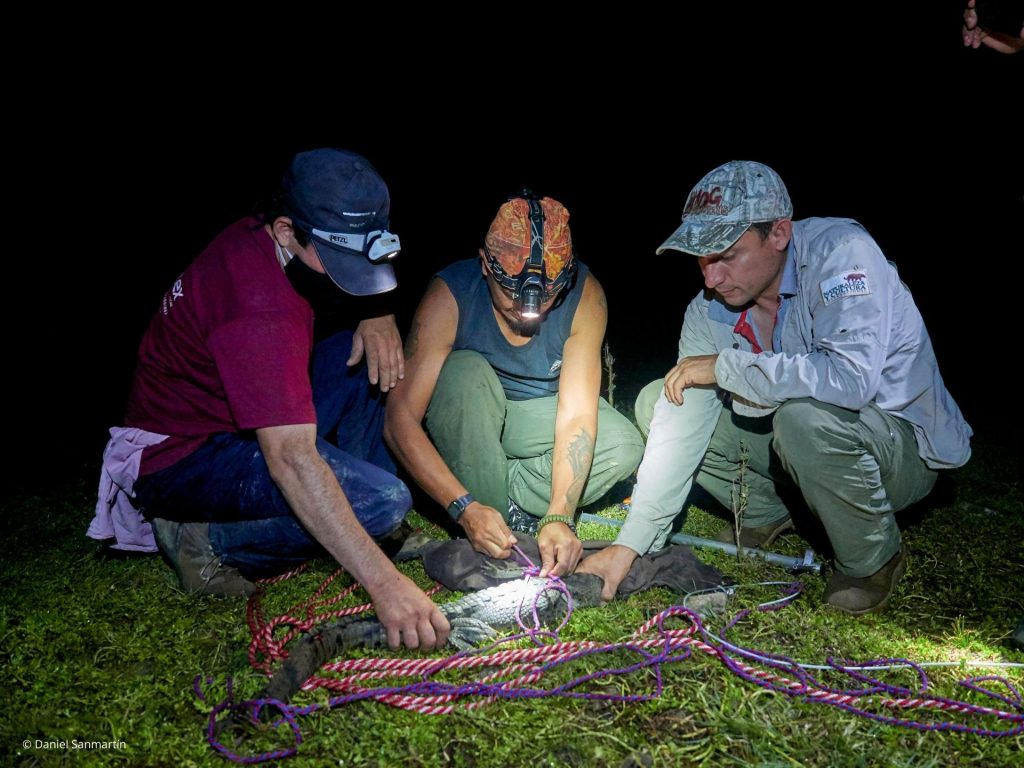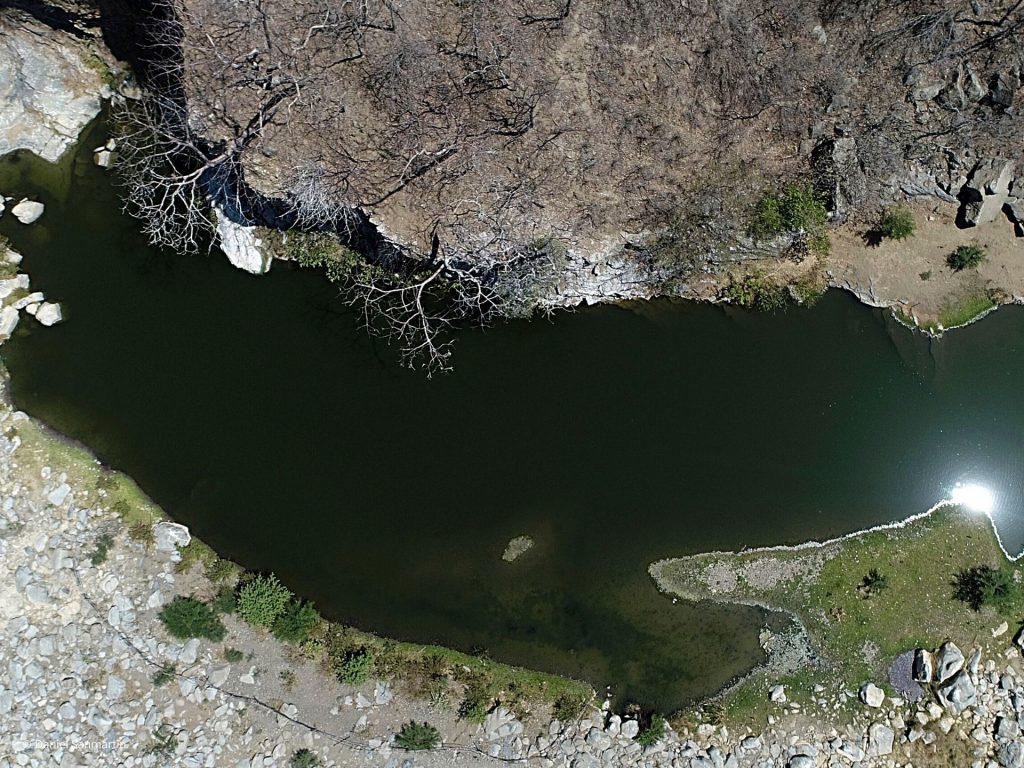Monitoring the Last American Crocodile Population in Southern Ecuador
07/16/2021
Strategic Area:
Species -
Content Type: Blog
Country:
Ecuador -
A team of scientists embarks on a risky but rewarding adventure to save the American crocodile.
“Working with crocodiles is not just for the brave but for experts,” says Darwin Núñez, a scientist at Nature and Culture International, who recalls a crocodile nearly biting his face. When handling crocodiles, one small mistake can mean the difference between life and death.
But for Darwin, a leading herpetologist in Ecuador, the risk is worth the reward. He is working to save one of the last populations of the American crocodile (Crocodylus sp.) in the dry forests of southern Ecuador.

The American crocodile is distributed from the southern tip of Florida in the United States to the Pacific coast of Colombia, Ecuador, and Peru. Despite its wide distribution, the animal is considered vulnerable by the International Union for Conservation of Nature.
Its populations were seriously depleted from 1930 through 1970 due to the high commercial value of the crocodile’s skin. Approximately 200,000 skins were exported from Ecuador alone during this period. Now, however, the greatest threats to the American crocodile are the destruction and contamination of its habitat due to agricultural expansion, mining, and urbanization.
In Ecuador, the American crocodile is found in Guayas, El Oro, Esmeraldas, and Loja provinces. Very little is known about the population in Loja, specifically in the municipality of Zapotillo. To learn more about this population and its dry forest habitat, Nature and Culture began monitoring American crocodiles in Zapotillo’s Puyango River and Cazaderos Creek, in Loja, with support from the Technical University of Loja, the AMARU Zoo, and the Ministry of Environment, Water, and Ecological Transition of Ecuador.

Over the past few months, Darwin and his team made 18 trips to survey the crocodiles, record phenotypic data (or observable physical properties), extract tissue and saliva samples, and take water samples from the Puyango River.
The chase begins at sundown. The biologists venture down to Puyango River in search of the creature. Using flashlights, they scan the riverbanks for the glowing eyes of a lone crocodile hiding in the darkness of night.
After spotting an individual, the team uses a cable to catch the crocodile’s snout. When it tires of struggling with the cable, one scientist covers the reptile’s eyes with a t-shirt, others hold its tail and snout, and Darwin gets on the animal’s back to take samples.
The team of experts takes tissue and saliva samples, identifies whether the crocodile is male or female, extracts phenotypic data, releases the crocodile, and returns to the boat – all in 15 minutes or less! The process requires precision and concentration.
“The most difficult moment is the release. The crocodile can quickly turn around and give [you] a strong tail,” explains Darwin.

Darwin and his team have monitored 97 individuals over 35 kilometers along the Puyango River and Cazaderos Creek. Some individuals reach five meters (or 16 feet) long.
The team found an average of 2.8 individuals per kilometer, which worries Darwin. He says “there should be five individuals per kilometer for a healthy population.” This specific population is at risk because their river habitat is contaminated with heavy metals from mining.
The extinction of a top predator like the American crocodile would cause serious ecosystem and food web changes. Additionally, according to Darwin, it could result in the disappearance of water resources in the dry forests of Zapotillo. The herpetologist explains the crocodiles dig holes in the arid soil of dry forests in search of water, creating small lakes. These lakes feed larger lakes and rivers and can become important habitats where other species find a place to live.

Monitoring efforts and subsequent genetic testing have shown that this population may be a different species of American crocodile than the one previously registered in Ecuador (Crocodylus acutus). We are excited to discover more as we continue to study the population.
With your support, Darwin and his team plan to continue surveying the American crocodile and conduct additional research on crocodile genetics and water pollution. The results of their monitoring will indicate the status of the population in Loja, the health of the individuals, and the degree of contamination of their habitat. Results will inform conservation efforts in the region.
Together we can protect the American crocodile and its threatened habitat. Stay tuned for more updates from the field!
Did you hear? The Municipality of Loja recently declared Loja Municipal Conservation and Sustainable Use Area. Divided into 13 blocks throughout Loja, the new area saves wildlife and water sources for 200,000 people. Learn more here.


